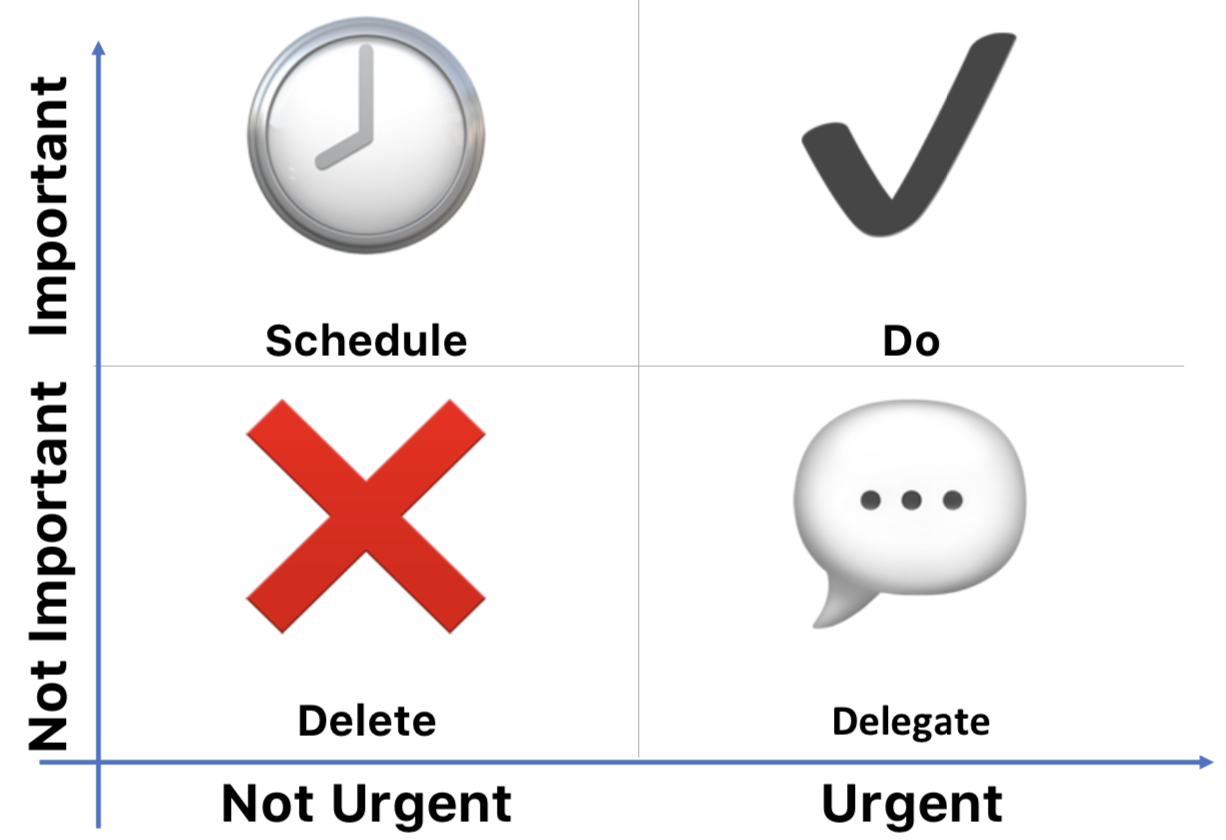What is the Eisenhower Matrix?
The Eisenhower Matrix, also known as the Urgent-Important Matrix or the Eisenhower Decision Matrix, is a commonly used model for time management. On the one hand it compares the urgency, on the other hand it compares the importance or importance of tasks and helps to set priorities.
Tasks are sorted into four quadrants according to their importance and urgency. This results in 4 possible combinations that are classified as A, B, C and D tasks:

- A-Tasks: important - urgent,
- B-tasks: important - not urgent,
- C-Tasks: not important - urgent and
- D-Tasks: not important - not urgent.
This makes it easier to set priorities, hand tasks over or delegate them to someone else, or include them in a schedule.
A-Tasks: Do
These tasks are of the highest value when it comes to achieving goals. You should therefore do them yourself immediately. Only if you take care of these tasks yourself can you be sure that the tasks are actually completed.
B-Tasks: Schedule
As these tasks are also important for the achievement of your goals, you take care of them yourself. However, the completion is not bound to a certain time frame in the near future. It is therefore sufficient to set an exact time for the completion of these tasks.
C-Tasks: Delegate
These tasks should be completed as soon as possible, but it is usually not necessary for you to take care of the task yourself. Eisenhower therefore recommends that you delegate tasks in this quadrant as far as possible.
D-Tasks: Delete
Tasks that don't bring you closer to your goals, and where it doesn't matter when they're done, have the least value. In case of doubt, these tasks can be left unfinished.

